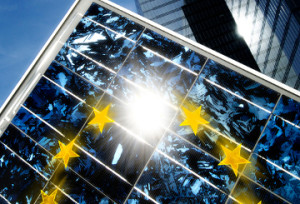 EU PVSEC is now one of the premiere photovoltaic conferences globally, attracting over 1000 papers and about 3000 participants each year. The 31st European Photovoltaic Solar Energy Conference and Exhibition (EU PVSEC 2015) took place from Monday 14th to Friday 18th September 2015 and welcomes photovoltaics (PV) experts to the CCH Congress Center in Hamburg, Germany.
EU PVSEC is now one of the premiere photovoltaic conferences globally, attracting over 1000 papers and about 3000 participants each year. The 31st European Photovoltaic Solar Energy Conference and Exhibition (EU PVSEC 2015) took place from Monday 14th to Friday 18th September 2015 and welcomes photovoltaics (PV) experts to the CCH Congress Center in Hamburg, Germany.
The EU PVSEC is regarded as the world’s leading platform for exchanges between the worlds of PV research and industry in the global PV solar industry sector. The EU PVSEC 2015 scientific conference started on Monday at 8.30 am with three keynote scientific papers on latest global developments on nanostructured solar cells. Highlights are announcements on the first hybrid device with 40% efficiency of Direct Sunlight and towards Ultra-High Efficient Photovoltaics based on Perovskite/crystalline Silicon Tandem Devices.
The following political opening ceremony is chaired by Conference General Chair Dr.-Ing. Stefan Rinck, CEO of SINGULUS TECHNOLOGIES, Member of Main Executive Board VDMA and Chairman Committee for Research and Innovation, and Technical Programme. Dr. Rinck: “We need to take PV to the next level in terms of cost-effective, integrated electricity supply solutions. Evolutionary improvement in cell concepts like PERC (PERL/PERT), bifacial devices, n-type material, IBC and heterojunction cells as well as high efficiency thin films like CIGS will drive the future of solar systems further. Europe has cutting-edge R&D and we can leverage this with industry to achieve a significant future market share in PV products”.
Dr. Heinz Ossenbrink, Institute for Energy and Transport JRC, European Commission, during the opening of the EU PVSEC: “The total capacity in Europe is now with 87 GW above the 2020 target of the renewable energy directive, even if only 8% (6.9 GW) of this value has been installed in 2014. One reason for this development is the increase in non-technology costs, such as connection, administrative and operational fees. Europe role should take the lead in grid-integration technologies, by intelligent inverters, battery systems and smart metering. It should establish technology solutions which maximise the value of PV, including storing in heat and cold. As a market driver, Europe would create the innovation for such systems and ensure by an active standards policy the inter-operability across different supplier, effectively reducing the cost of such relatively complex systems”.
Prof. Dr. Carsten Ager, EWE-Forschungszentrum für Energietechnologie e. V., Oldenburg, Germany: “The photovoltaics community has been extremely successful in developing a solution to the world’s energy challenges: Photovoltaics is nowadays an economical, reliable, and readily available technology. In the future, our R&D attention needs a stronger focus on the system integration of PV power”.
Prof. Dr. Eicke Weber, President ISE Fraunhofer Institut, Germany, stated during his presentation: “The experience of the last five years in Germany has shown that the new grid of the future with strong renewable energy is providing more stability in our electricity system”. Dr. Paolo Frankl, Head of Renewable Energy Division, IEA International Energy Agency, France, moderated the Opening Panel with the Topic: “Europe’s role to take PV to the next level – Focusing on cost effective integrated supply solutions”. One of his concluding comments was “PV is the most important energy source in the future. But a challenge for Europe is the Grid integration”.



